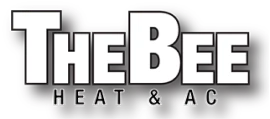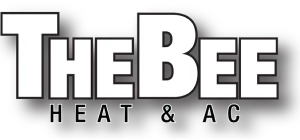Air conditioners are essential components of modern living, providing much-needed relief from sweltering summer temperatures and maintaining optimal indoor environments. With numerous options available in the market, choosing the right air conditioner can be a daunting task. This comprehensive guide will help you understand the different types of air conditioners, their benefits, drawbacks, and features so that you can make an informed decision when purchasing your next cooling system.
On This Article
hide
1)
Central Air Conditioners
2)
Ductless Mini-Split Air Conditioners
3)
Window Air Conditioners
4)
Portable Air Conditioners
5)
Through-the-Wall Air Conditioners
6)
Packaged Terminal Air Conditioners (PTAC)
7)
Evaporative Coolers
8)
Geothermal Cooling Systems
9)
Hybrid Air Conditioners
10)
Conclusion
Central Air Conditioners
Central air conditioners are the most common and widely used air conditioning systems, especially in larger homes and commercial buildings. They consist of an outdoor unit, typically containing the compressor and condenser, and an indoor unit, housing the evaporator coil and air handler. These systems circulate cooled air through a network of ducts that distribute air throughout the building.
Pros:
Efficient cooling for larger spaces.
Even temperature distribution.
Can be combined with a heating system.
Minimal noise, as the noisy components are located outside.
Cons:
High initial cost and installation.
Requires ductwork.
Potential energy loss through duct leakage.
Ductless Mini-Split Air Conditioners
Ductless mini-split air conditioners are a popular choice for homes and businesses without existing ductwork. These systems consist of an outdoor unit and one or more indoor units connected by refrigerant lines. Each indoor unit can be independently controlled, allowing for customizable temperature settings in different zones.
Pros:
Energy efficient, as no ductwork means reduced energy loss.
Easy installation.
Zoned cooling for individual room control.
Sleek, modern design of indoor units.
Cons:
Can be more expensive than window or portable units.
May not be suitable for larger spaces.
Indoor units may require regular cleaning to maintain efficiency.
Window Air Conditioners
Window air conditioners are compact, self-contained units that are installed in a window or through a hole in an exterior wall. They are designed to cool individual rooms and are an affordable option for smaller spaces or supplementary cooling.
Pros:
Affordable and widely available.
Easy to install and remove.
Suitable for smaller spaces or single-room cooling.
Cons:
May obstruct window view and natural light.
Can be noisy.
Limited to areas with appropriate window size and type.
Portable Air Conditioners
Portable air conditioners are free-standing units that can be moved from room to room as needed. They require an exhaust hose to vent hot air outside through a window, sliding door, or wall vent. These units are ideal for temporary cooling solutions or for rooms where permanent installation is not possible.
Pros:
Mobility allows for cooling where needed.
No permanent installation required.
Easy to set up and us.
Cons:
Limited cooling capacity.
Can be noisy.
Exhaust hose may be cumbersome and unsightly.
Through-the-Wall Air Conditioners
Through-the-wall air conditioners are similar to window units but are installed through a hole in an exterior wall instead of a window. They are a more permanent solution and offer better insulation than window units, as they do not leave gaps around the unit.
Pros:
Better insulation than window units.
Does not obstruct window view and natural light.
Suitable for single-room cooling.
Cons:
Requires professional installation.
Limited to exterior walls with appropriate dimensions.
Can be noisy.
Packaged Terminal Air Conditioners (PTAC)
Commonly found in hotels and commercial spaces, PTAC units are self-contained systems installed through an exterior wall. They provide both heating and cooling capabilities and are designed for individual room control. PTAC units are larger than window or through-the-wall units and require a dedicated wall sleeve for installation.
Pros:
Both heating and cooling capabilities.
Individual room control.
Commonly used in commercial settings, such as hotels and offices.
Cons:
Requires professional installation.
Can be noisy.
Not ideal for residential use due to size and appearance.
Evaporative Coolers
Also known as swamp coolers, evaporative coolers work by using the natural process of evaporation to cool the air. They draw in hot, dry air and pass it over water-saturated pads, causing the water to evaporate and cool the air before it is circulated throughout the room. These systems are most effective in hot, dry climates.
Pros:
Energy-efficient, using less electricity than traditional air conditioners.
Adds moisture to the air, which can be beneficial in dry climates.
Lower initial cost.
Cons:
Not suitable for humid climates.
Limited cooling capacity compared to traditional air conditioners.
Requires regular maintenance of water pads and reservoir.
Geothermal Cooling Systems
Geothermal cooling systems harness the constant temperature of the earth to provide energy-efficient cooling for your home. These systems utilize a series of underground pipes filled with water or a refrigerant that absorbs heat from the ground. The cooled liquid is then circulated through a heat exchanger, which transfers the cool energy to your home’s air.
Pros:
Highly energy-efficient.
Environmentally friendly.
Can be combined with a heating system.
Low operating costs over time.
Cons:
High initial cost and installation.
Requires significant yard space for underground piping.
Not suitable for all geographic locations.
Hybrid Air Conditioners
Hybrid air conditioners, also known as dual-fuel systems, combine the benefits of a traditional central air conditioner with a heat pump. These systems automatically switch between using electricity to cool your home and using the heat pump’s energy-efficient heating capabilities when temperatures drop.
Pros:
Energy-efficient cooling and heating.
Automatic switching between electric and heat pump operation.
Suitable for various climates.
Cons:
High initial cost.
Requires professional installation and maintenance.
May require a separate heating system for extremely cold climates.
Conclusion
Choosing the right air conditioner for your home or business can significantly impact your comfort, energy consumption, and overall satisfaction. Understanding the different types of air conditioners, their features, and limitations is essential in making an informed decision. Whether you need a central system for a large home, a ductless mini-split for zoned cooling, or a portable unit for temporary relief, there is an air conditioning solution to suit your needs. Evaluate your space, climate, and budget before selecting the best option for your cooling needs.

